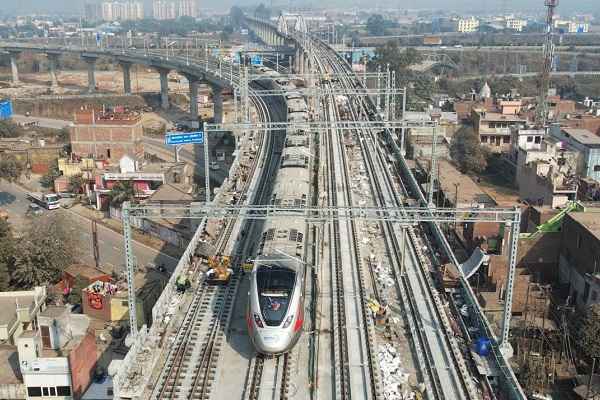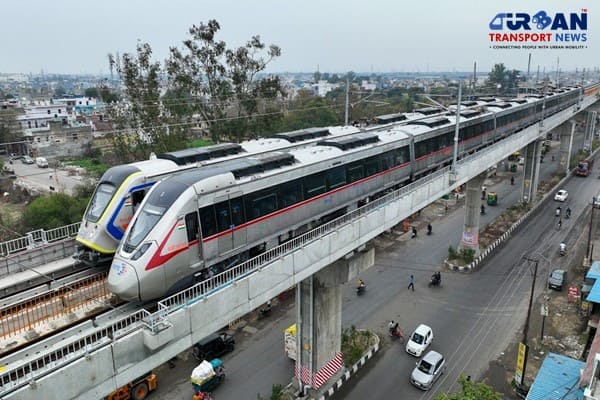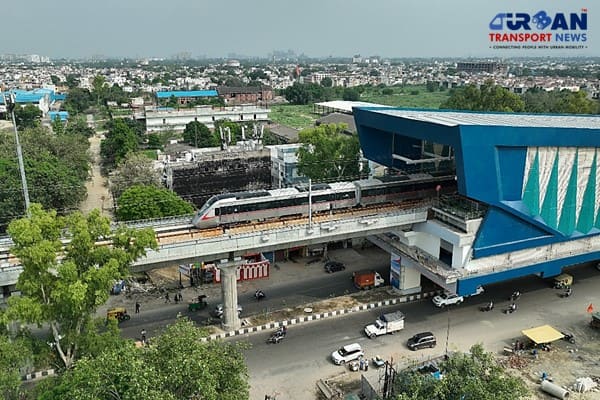 Qatar approves Saudi Rail Link Agreement, Accelerating Gulf Railway Vision 2030
Qatar approves Saudi Rail Link Agreement, Accelerating Gulf Railway Vision 2030 UP Govt plans to introduce Water Metro services in Ayodhya, Varanasi & Prayagraj
UP Govt plans to introduce Water Metro services in Ayodhya, Varanasi & Prayagraj India’s First Urban Ropeway begins Trial Run in Varanasi, Set to carry 1 Lakh passengers daily
India’s First Urban Ropeway begins Trial Run in Varanasi, Set to carry 1 Lakh passengers daily India and Bhutan to Build First-Ever Rail Link: ₹4,033 Cr Project to Boost Regional Connectivity
India and Bhutan to Build First-Ever Rail Link: ₹4,033 Cr Project to Boost Regional Connectivity Patna to launch Eco-Friendly Water Metro; Trial Run soon between Digha and Kangan Ghats
Patna to launch Eco-Friendly Water Metro; Trial Run soon between Digha and Kangan Ghats Air India Group set to launch Flights Operations from Navi Mumbai International Airport
Air India Group set to launch Flights Operations from Navi Mumbai International Airport Chennai to launch 25-Year Mobility Plan with Unified QR Ticketing and One-App Transit System
Chennai to launch 25-Year Mobility Plan with Unified QR Ticketing and One-App Transit System Kochi Metro bags ₹4.4 crore contract to prepare DPR for Mumbai Water Metro Proejct
Kochi Metro bags ₹4.4 crore contract to prepare DPR for Mumbai Water Metro Proejct Navi Mumbai International Airport set for September launch; IndiGo and Akasa Air to lead Operations
Navi Mumbai International Airport set for September launch; IndiGo and Akasa Air to lead Operations Noida International Airport to be Inaugurated on October 30, Commercial Flights in 45 Days
Noida International Airport to be Inaugurated on October 30, Commercial Flights in 45 Days
NCRTC and HRIDC sign MoU to exchange knowledge and technological support

New Delhi, India (Urban Transport News): The National Capital Region Transport Corporation (NCRTC) has signed a cooperation agreement with the Haryana Rail Infrastructure Development Corporation (HRIDC) to share knowledge and technological support with implementing its in-house developed IT tool, SPEED for them.
HRIDC is going to implement a number of rail projects including, the Haryana Orbital Rail Corridor (HORC) connecting Palwal to Sonipat via Sohna, Manesar and Kharkhouda. It is a broad-gauge double railway line for passenger and freight traffic which will provide seamless connectivity to Dedicated Freight Corridors (DFC) and to Indian Railways. SPEED will be an extremely crucial tool in their implementation.
SPEED©, ‘Systematic Program Evaluation for Efficient delivery of Project’, is a custom-built application with focused features and capabilities keeping in view the grassroots-level practical requirements of the project. It is a project monitoring and management tool, that has inbuilt capabilities for a complete audit trail of actions performed, provision for maintaining information about different contract packages and corridors, and configurable reporting formats.
SPEED uses information and data from separate tools/Apps such as Primavera, Common Data Environment (CDE), Attendance App, Quality App and other applications on a single platform giving outputs in the form of various reports and visual dashboards based upon Key Performance Indicators.
The key features of the application include monitoring progress on both pre-construction and construction levels. The activities involved in the pre-construction works can be defined in SPEED with different sub-stages against which the progress can be captured for land acquisition, identification of utilities, the progress of utility diversion, clearance of site etc.
Speaking on the occasion, Vinay Kumar Singh, Managing Director, NCRTC said, “The use of SPEED made it possible for us to save considerable time in the implementation of the Delhi-Ghaziabad-Meerut RRTS corridor. It helped us in risk mitigation and avoiding delays as a result of timely corrective actions which led to timely completion and overall savings in project cost. This project implementation experience and regular refinement based upon the feedback and requirements is what makes it stand out from other such tools available in the market.”
The progress is captured on daily basis from field units on SPEED for the respective activities/elements executed. Moreover, field engineers can input information as and when an activity is completed through their phone/tablet/laptop from the site. Based upon the inputs done for pre-construction and construction activities, various views of progress are available in the interactive dashboard depicting the details of the completed and balance status of the activities for management review.
“Both HRIDC and NCRTC are implementing transformative rail-based projects which will play a key role in enabling high-speed commuter & freight movement and in turn bringing prosperity to the region. NCRTC has set benchmarks for the entire industry in terms of efficient & timely project implementation and technological innovation. We are thankful to team NCRTC who are helping us in the adoption and customization of SPEED, which is a highly refined & powerful tool for project monitoring and management. I believe SPEED will prove to be a highly effective tool enabling team HRIDC for speedy and quality delivery of projects,” commented Rajesh Agarwal, Managing Director, HRIDC.
NCRTC realised the full potential of this technology in the implementation of the Delhi-Ghaziabad-Meerut RRTS Corridor during the global pandemic Covid-19. The nationwide lockdown presented several unprecedented challenges to keep the progress on schedule. During that time, the platform made it possible for all teams working at several sites to coordinate seamlessly without any physical interaction and ensure that the project progress remained on schedule.







